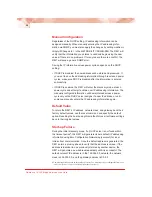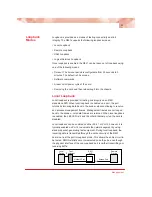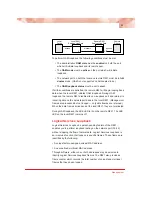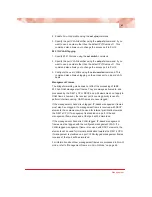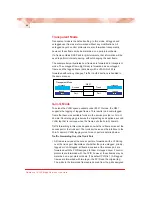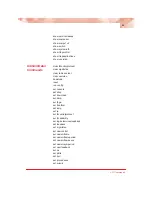
Radiance 10/100 Mbps Services Line Card
40
Priority Bits
The classification of p-bits to traffic types is defined in IEEE 802.1D and
802.1ad (Provider Bridge). The R821 supports both models as well as a
free form, which allows you to define how each p-bit value will be
mapped to a queue. For more information about free form configuration,
refer to “Free Form Settings” on page 41.
When the 802.1D model is selected, the priority from highest to lowest is
Voice (< 10 ms latency and jitter), Controlled Load, Best Effort, and
Background. The 802.1D p-bits-to-queue settings are as follows:
000: 1
001: 0
010: 0
011: 1
100: 2
101: 2
110: 3
111: 3
When Provider Bridge is selected, the priority from highest to lowest is
Network Control, Voice (< 10 ms latency and jitter), Critical Applications,
and Best Effort. The Provider Bridge p-bits-to-queue settings are as
follows:
000: 0
001: 0
010: 1
011: 1
100: 2
101: 2
110: 3
111: 3
Default Port Priority
The priority bits on each port can be set independently to any value
between 0 and 7. When a port receives an untagged frame, or when both
DSCP and p-bits classifications are disabled, the frame is assigned to
the default port priority. Each priority value is mapped to a queue based
on the selected p-bits model (IEEE 802.1D or Provider Bridge). By
default, both ports are set to the lowest priority queue, 0. This means all
frames received without priority information are assigned to queue 0. It
also means all received frames are assigned to queue 0 when DSCP
and p-bits classifications are disabled.
When the IEEE 802.1D model is selected, the priority-to-queue
mappings are as follows:
0:1
1:0
2:0
3:1
4:2
5:2
6:3
7:3
When the Provider Bridge model is selected, the priority-to-queue
mappings are as follows:
0:0
1:0
2:1
3:1
4:2
5:2
6:3
7:3



